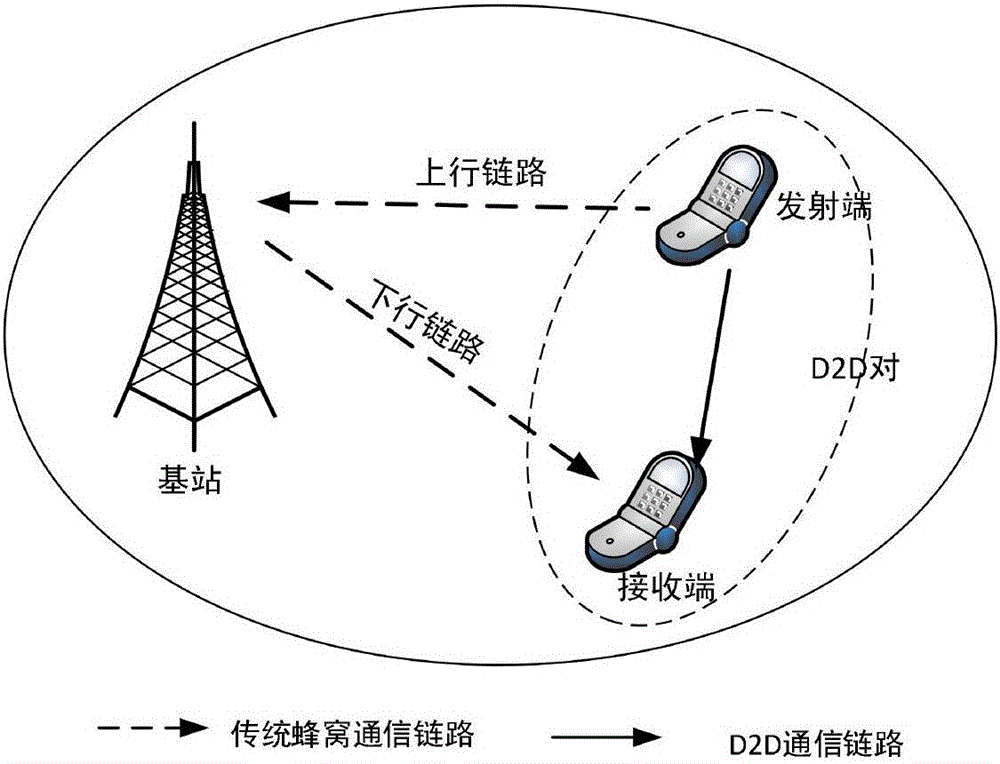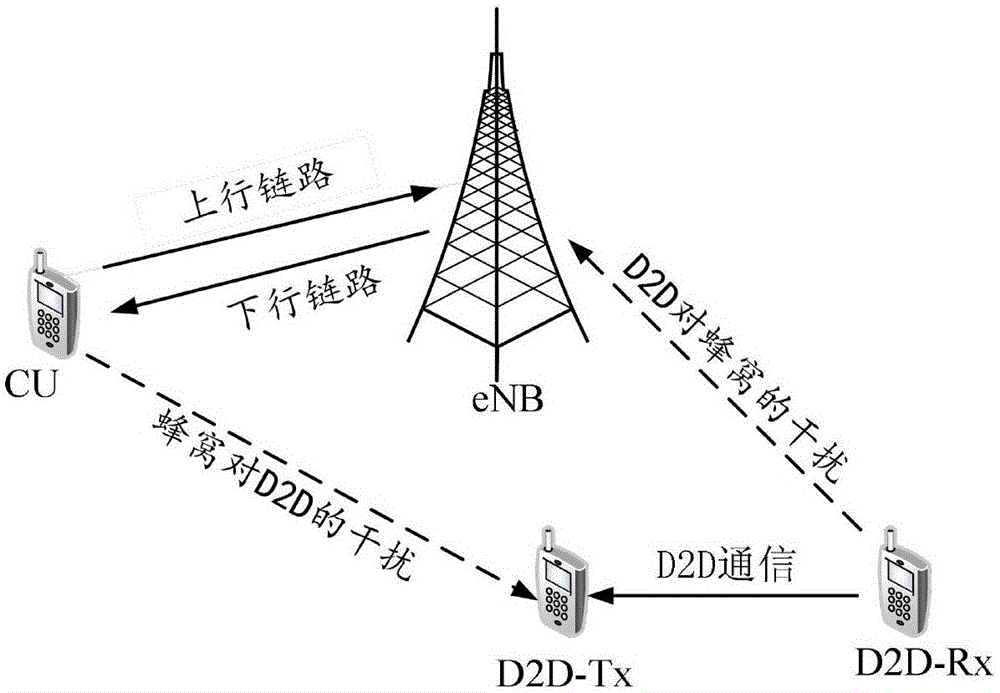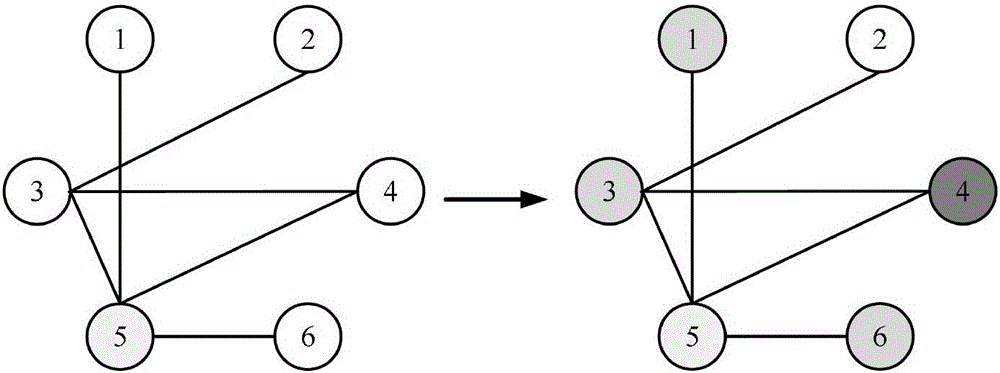Resource allocation method based on D2D clustering
A resource allocation and clustering technology, which is applied in the field of resource allocation based on D2D clustering, can solve the problems that cannot be completely eliminated, the adverse effects of cellular communication, and the inability to improve resource utilization.
- Summary
- Abstract
- Description
- Claims
- Application Information
AI Technical Summary
Problems solved by technology
Method used
Image
Examples
Embodiment Construction
[0046] The preferred embodiments of the present invention will be described in detail below with reference to the accompanying drawings.
[0047] figure 2 It is a schematic diagram of the scene of the present invention. As shown in the figure, D2D user pairs (D2D-Tx and D2D-Rx) share cell resources with cellular users, and there is no need for the base station to forward data. Compared with downlink resources, uplink resources are not fully utilized , so the present invention considers the D2D pair to share the uplink resource of the cellular user. When the D2D-Tx (D2D transmitting end) will cause co-channel interference to the uplink receiving end (ie eNB) of the cellular user. At the same time, D2D-Rx (the receiving end of D2D) will also be interfered by cellular users who reuse the same spectrum resources as it.
[0048] In this embodiment, a single cell model is considered, where M pairs of D2D users, N cellular users are randomly distributed in the cell, the set of D2D...
PUM
 Login to View More
Login to View More Abstract
Description
Claims
Application Information
 Login to View More
Login to View More - R&D
- Intellectual Property
- Life Sciences
- Materials
- Tech Scout
- Unparalleled Data Quality
- Higher Quality Content
- 60% Fewer Hallucinations
Browse by: Latest US Patents, China's latest patents, Technical Efficacy Thesaurus, Application Domain, Technology Topic, Popular Technical Reports.
© 2025 PatSnap. All rights reserved.Legal|Privacy policy|Modern Slavery Act Transparency Statement|Sitemap|About US| Contact US: help@patsnap.com



